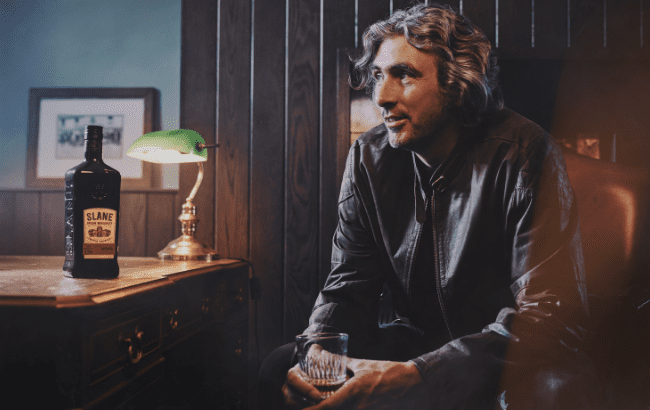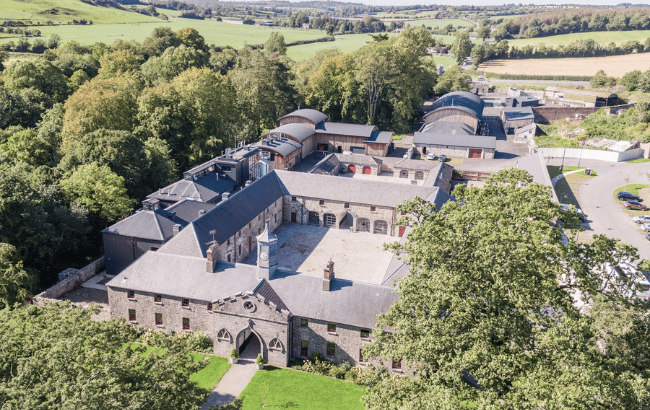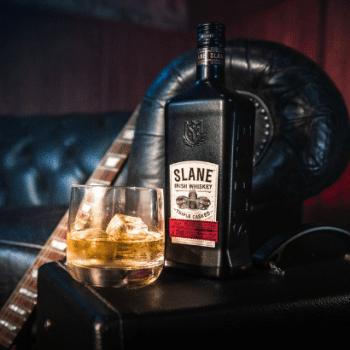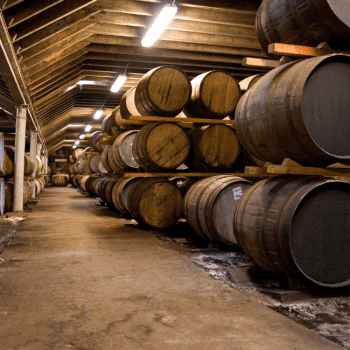SB meets… Alex Conyngham, Slane Irish Whiskey
Slane Castle has been bringing music to the masses since the early 80s, but its only in the last decade that its become home to a different kind of crowd pleaser, as we found out when we grabbed a drink with Alex Conyngham, co-founder of Slane Irish Whiskey.

The Slane estate has been home to a working farm for decades – why did you and your family choose to start producing whiskey there?
One of the reasons we started the whiskey project was because we were growing cereals on our working farm anyway, which was primarily ending up in the animal feed market, and we thought, why the hell are we giving it to cattle when it would be a lot more practical and valuable to turn it into whiskey?
The estate has also been home to the annual Slane Music Festival since 1981, and it has since become one of the great outdoor venues that artists love to play. But we started to recognise we were over-dependent on that source of income, and if for whatever reason live music came under threat, as it was a few years back with the pandemic, my dad wanted us to diversify.
So because we had the raw materials, we have the water supply, we have this amazing place and buildings, plus we both happen to love Irish whiskey as a category, we started the whiskey business in 2009.

Did you have a vision for what you wanted Slane whiskey to be or represent?
Initially, we didn’t have a distillery – we started by sourcing liquid from other producers – but then I designed the distillery to be barley-only so that we could avail of our raw material.
Our water source is the Rover Boyne which flows right through the farm. Historically in the Boyne Valley, which is our region of Ireland, there were a lot of distilleries opened during the last Irish whiskey boom. So you would have had distilleries to the west of us and to the east of us, with barrels of whiskey being transported on barges down the Boyne to be exported around the world. So we brought distilling back to the Boyne Valley.
Did you face any unexpected challenges when building the distillery?
So we take our water from the River Boyne, but you do need a backup supply just in case for whatever reason, such as drought or pollution, because we need to be able to keep making whiskey.
So we had to find a borehole, and after (unsuccessfully) hiring a drilling company with all of its fancy equipment to find one, I did what I should have done in the beginning, which is I got a water diviner. He was an amazing character, and he told me we had to go to a very different location to where we’d been looking. And I’m doing the pipe calculation thinking this is going to be really expensive, but he went to a totally different spot and he said ‘right here’, pointing beneath him, so we went down and found this perfect, amazing supply of water. I thought this is amazing.
However, we soon got talking about fairy forts. Now, fairy forts in Ireland are very revered – this is where the fairies gather, and you must never build near a fairy fort, as you mustn’t disturb them. And that’s important, particularly for the Irish as there’s a reverence for the fairies. So I had a panic that we might have fairy forts in the area of what was going to become the distillery, and at the time, we didn’t… but then our plans changed. And the guy had pointed out that there was a fairy fort close to the new position of the distillery.
So when the plans changed, I suddenly had to stop construction and go guys, we can’t do this. And they’re like, what do you mean? I said, well, there’s a fairy fort. At this point I’m dealing with engineers, construction managers, Brown-Forman – you can imagine the reaction. So I said, we need to get them out and I asked the man what we should do, and he said, ‘well, you can just ask the fairies to move’. He asked them on our behalf, and they agreed to move to a really beautiful collection of trees that we would never touch.
And so while everybody talks about the angel’s share, at Slane Distillery our share is for the fairies to say thank you.

What styles of whiskey do you produce at Slane Distillery?
Slane is slightly unusual, in that we make all three styles of Irish whiskey.
So, the three types of whiskey loosely made in Ireland are malt whiskey, which is obviously from 100% malted barley that can be double or triple distilled under the rules, but we believe in triple distillation.
Then using those three pot stills, we also make the second type of Irish whiskey which is pot still whiskey, and that’s the category to watch in Irish.
And the third type is grain whiskey. So using column distillation, (we also have column stills at Slane) we do continuous distillation, but unusually, our grain whiskey is made from our barley mash bill.
Putting unmalted barley through column stills is technically pretty challenging, and we work with a Scottish engineering firm to help us develop that process. But we produce a very different grain whiskey, which has an even higher proportion of our malted barley than our pot still would. So you’ve got a very creamy, spicy grain whiskey, which will make a really interesting single grain.
So we feature in all those three categories. And then of course, you could blend any combination of those to create a blended whiskey as well, and that means that over the next decade, Slane is going to be able to produce ultimately an infinite variation of whiskey if we wanted to.
You say pot still whiskey is the one to watch within the Irish category – why is that?
It’s our [Ireland’s] native style and it introduces unmalted barley into the mash bill. The method really arose out of malt taxes that came in, which was to try and gain taxation on imports coming into the distillery, and so producers started introducing unmalted barley into the mash bill to reduce the tax bill, and then discovered that, although it does take a little bit longer to mature, it actually produces a slightly different flavour profile that tends to have a lovely kind of creamy mouthfeel.
So what’s starting to happen now is that the younger distilleries, like Slane, who’ve been laying down pot still whiskey, are going to start emerging. Ours isn’t ready yet, but over the next five years or so, these pot still whiskeys are going to come out, and I think it’s a big part of what the ultra-premium category will be in Irish.
It’s going to be really exciting watching that category emerge, and obviously where single malts in Scotland are very well established, pot still is almost like our Irish answer to that.

Why do you choose to triple distil your malt and pot still whiskeys?
For me, it’s just a little more refined. Each time you do a distillation, it gives you an opportunity. You can look at it two ways, but it’s not just about what you cut away, it’s about what you retain, and if you get the chance to do that three times, to retain, you can really focus on what you bring forward from the new make.
Brown-Forman acquired the company in 2015 – how has this benefitted the brand or changed its direction?
While it was technically an acquisition, I would say it’s more of a partnership, because the family is still very involved, and a Conyngham family member will always sit on the board of the company, and I personally take an active role in product development.

In order to get Slane whiskey started 14 years ago, we didn’t do the gin thing. Instead we sourced malt and grain whiskeys that had already been matured so that it was legally whiskey on the Irish rules, having been held in barrels for at least three years – in fact, some of the stock actually bought was significantly older than that.
We could have just blended that and put it out to market, but rather than just blending someone else’s juice, we decided to put our own stamp on it by disgorging that liquid and putting it into barrels of our choosing.
So this partnership with Brown-Forman became a huge advantage to us because not only are they great American whiskey makers, but they also have three cooperages where they make barrels. So we suddenly had access to all of these amazing casks.
So they provide us with a virgin American oak, which is really heavily toasted and customised for us. The toasting produces a strong vanilla note for the whiskey, which is quite a distinctive note of Slane. And then our second barrel is also ex-Brown-Forman, but rather than coming from that general inventory, which is all of their whiskeys aggregated together, we only take whiskey casks from Jack Daniel’s, which deepens the sweet notes in Slane.
If you look at Irish blends, I would say generally they will have a nice light natural sweetness to them. But for me, nothing will come out of Slane ‘light’. I want it deeper, so we’re much more heavy brown sugar notes, and that comes from that Tennessee cask.
Related news
